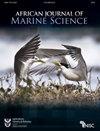Development of genetic tools for the redbait species Pyura herdmani and P. stolonifera, important bioengineers along African coastlines
IF 1.4
4区 生物学
Q3 MARINE & FRESHWATER BIOLOGY
引用次数: 0
Abstract
The development of new genetic resources is key for biological conservation in an era when the preservation of biodiversity is crucial. Here, we report the development of microsatellites and mitochondrial markers for the redbait species Pyura herdmani and P. stolonifera, both important bioengineers along African coastlines. Specifically, we identified microsatellites by means of pyrosequencing and variable regions in the mitochondrial genome using RAD-seq libraries that were generated with Illumina sequencing. A total of 4 339 putative microsatellites were found, of which 32 were tested on individuals collected along the southeast coast of South Africa. Of those, five microsatellites cross-amplified consistently in both species, and these were tested on a total of 260 samples. Additionally, we mapped the partial mitochondrial genome of a small number of individuals from both species and identified the most-variable regions by comparing a small number of individuals from all regions where these species have been recorded (including western South Africa and northwest Africa). The genetic markers developed here can be used to conduct population genetic studies, to monitor range shifts under contemporary climate change, and to help in preserving ecosystem functioning along African coastlines.非洲沿海重要生物工程红诱饵物种Pyura herdmani和P. stolonifera遗传工具的开发
在保护生物多样性至关重要的时代,开发新的遗传资源是生物保护的关键。在这里,我们报道了红诱饵物种Pyura herdmani和P. stolonifera的微卫星和线粒体标记的发展,这两个物种都是非洲海岸线上重要的生物工程师。具体来说,我们通过焦磷酸测序鉴定了微卫星,并使用Illumina测序生成的RAD-seq文库鉴定了线粒体基因组中的可变区域。共发现4 339个疑似微卫星,其中32个对南非东南海岸收集的个体进行了检测。其中,五个微卫星在两个物种中持续交叉扩增,并在总共260个样本上进行了测试。此外,我们绘制了来自这两个物种的少数个体的部分线粒体基因组图谱,并通过比较来自这些物种已记录的所有地区(包括南非西部和非洲西北部)的少数个体,确定了变化最大的区域。这里开发的遗传标记可以用于进行种群遗传研究,监测当代气候变化下的范围变化,并帮助保护非洲海岸线上的生态系统功能。
本文章由计算机程序翻译,如有差异,请以英文原文为准。
求助全文
约1分钟内获得全文
求助全文
来源期刊

African Journal of Marine Science
生物-海洋与淡水生物学
CiteScore
2.60
自引率
16.70%
发文量
17
审稿时长
6-12 weeks
期刊介绍:
The African (formerly South African) Journal of Marine Science provides an international forum for the publication of original scientific contributions or critical reviews, involving oceanic, shelf or estuarine waters, inclusive of oceanography, studies of organisms and their habitats, and aquaculture. Papers on the conservation and management of living resources, relevant social science and governance, or new techniques, are all welcomed, as are those that integrate different disciplines. Priority will be given to rigorous, question-driven research, rather than descriptive research. Contributions from African waters, including the Southern Ocean, are particularly encouraged, although not to the exclusion of those from elsewhere that have relevance to the African context. Submissions may take the form of a paper or a short communication. The journal aims to achieve a balanced representation of subject areas but also publishes proceedings of symposia in dedicated issues, as well as guest-edited suites on thematic topics in regular issues.
 求助内容:
求助内容: 应助结果提醒方式:
应助结果提醒方式:


